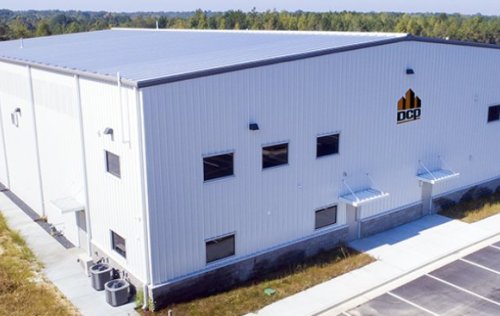5 Reasons your Tennis Court Is Falling Apart
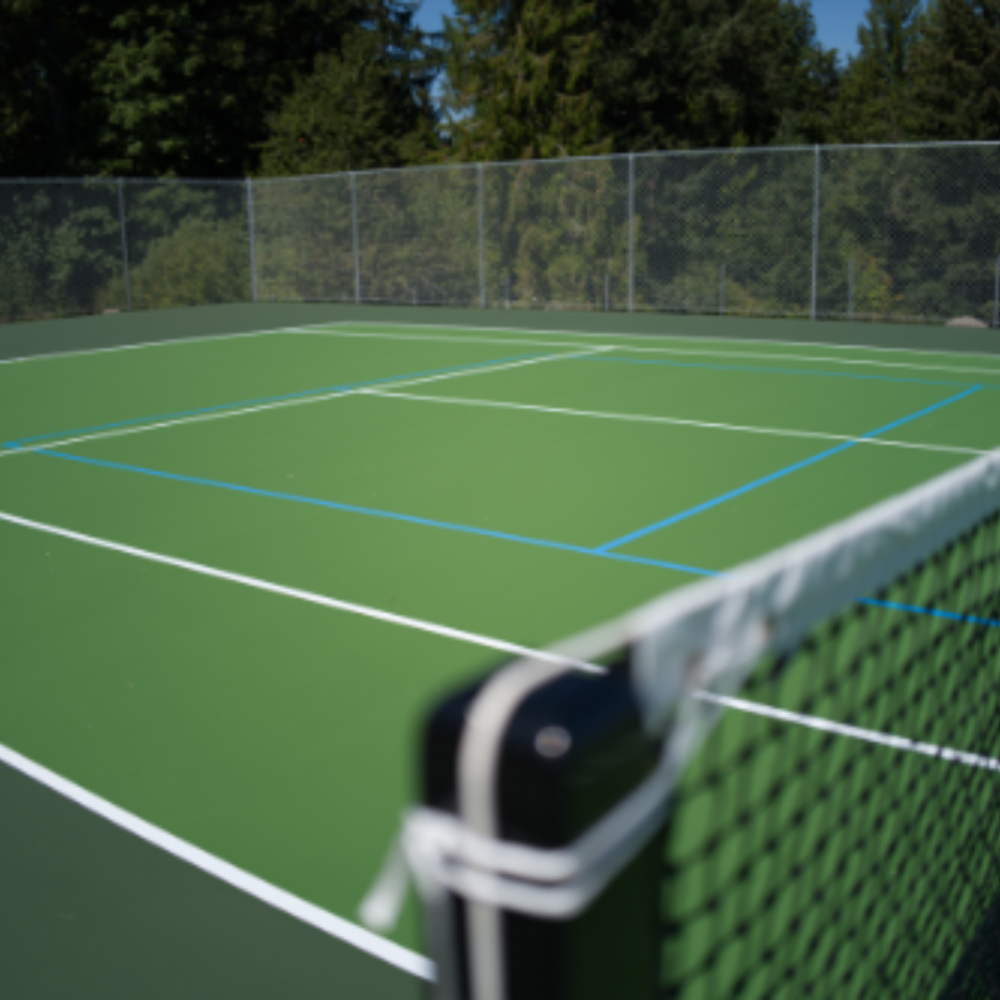
The Secret to a Longer-Lasting Tennis Court
A properly maintained tennis court should only need to be redone every four to eight years. If you find yourself having to resurface it every couple of years, you may be overlooking some issues that cause severe damage to the surface of the court, the paint and the line markings.
Although the quality and type of surface paint you use on the court is the most important component in the longevity of a tennis court, there are other crucial problems that tennis court owners tend to overlook. If you implement our suggestions, you should see the rate of maintenance drop drastically.
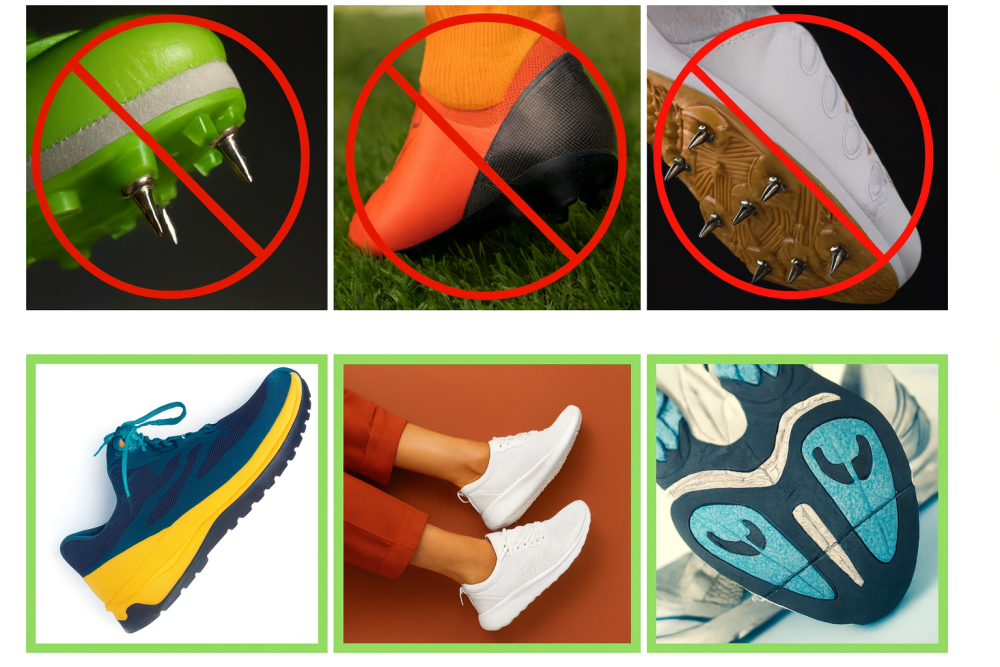
1. Footwear
The number one culprit of destroying the longevity of tennis court paint is footwear. It is natural for the court lines to fade with regular use of the court, however wearing footwear with bars, studs or sharp serrations on the soles should not be allowed on the tennis court. Shoes with “aggressive” soles can do a great deal of damage in a very short period of time, and may invalidate surface warranty.
It is beneficial to have a notice at the entrance of the court recommending the correct type of footwear. To avoid the tiresome and time-consuming task of cleaning marks off the surface, we advise having some form of mat, scraper or shoe-cleaning device at the entrance to the court, so the players can clean their shoes.
It is also essential to prohibit roller-skates, skateboards, bicycles and anything else that children may bring on the premises as they could damage the surface.
2. Furniture/Machinery
The second most damaging item to the surface of the tennis court is furniture. Most surfaces will be indented by heavy or sharp objects.
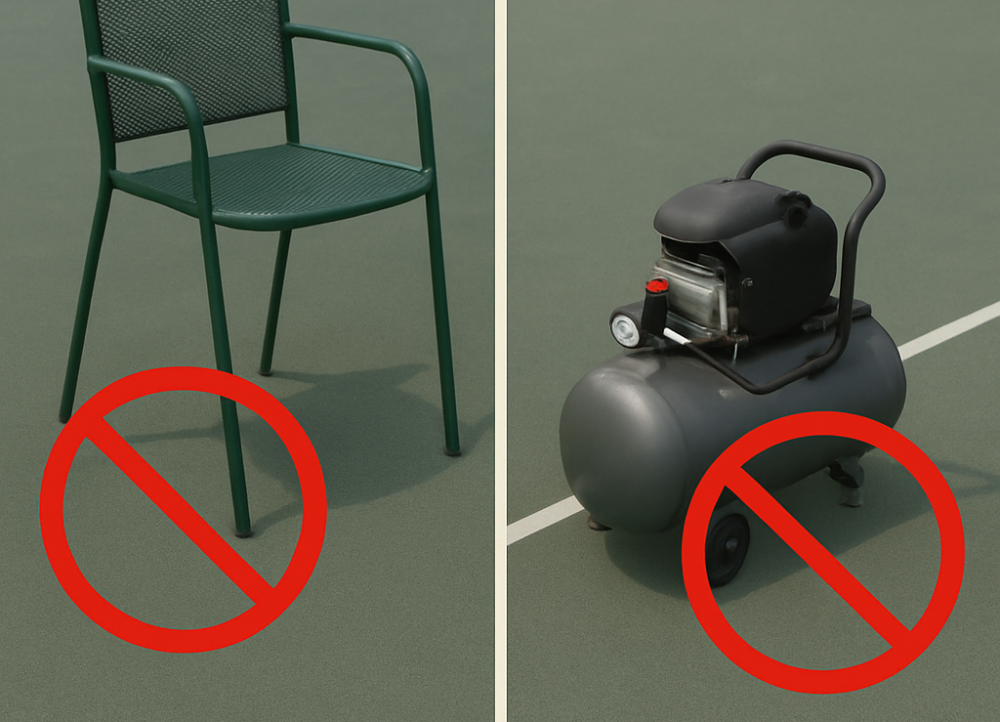
Umpire’s chairs, garden seats and other tennis tournament staples should never be placed directly onto the playing surface, boards or pads should be placed under the legs to spread any point load.
Similarly, any machinery being used on a tennis court surface, such as compressors, water-pumps, etc., should be placed on a piece of plywood or alternative board.
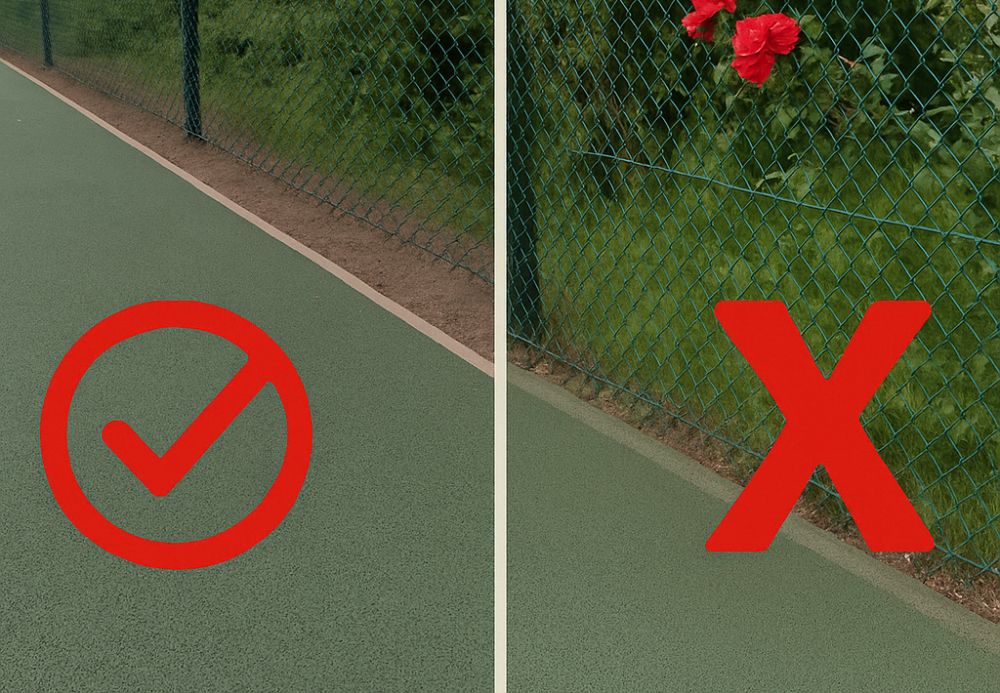
3. Edging
Proper edging is essential to protect your tennis court from weed growth, root intrusion, and fence damage.
Ensure that at least 0.5m strip around the outside of the fence is always kept clear of vegetation. The gap will form a barrier against plant and weed encroachment onto the surface of the tennis court. This can easily be accomplished using the appropriate weed-killer.
Avoid planting climbing plants, such as roses or clematis, to grow on the surrounding fence. These plants cause a disturbance in the tennis court surface with their growing roots, and can also cause severe damage to the fencing during high winds.
4. Overhanging Trees
Maintain overhanging branches by regularly pruning them and keeping them outside the tennis court fence.
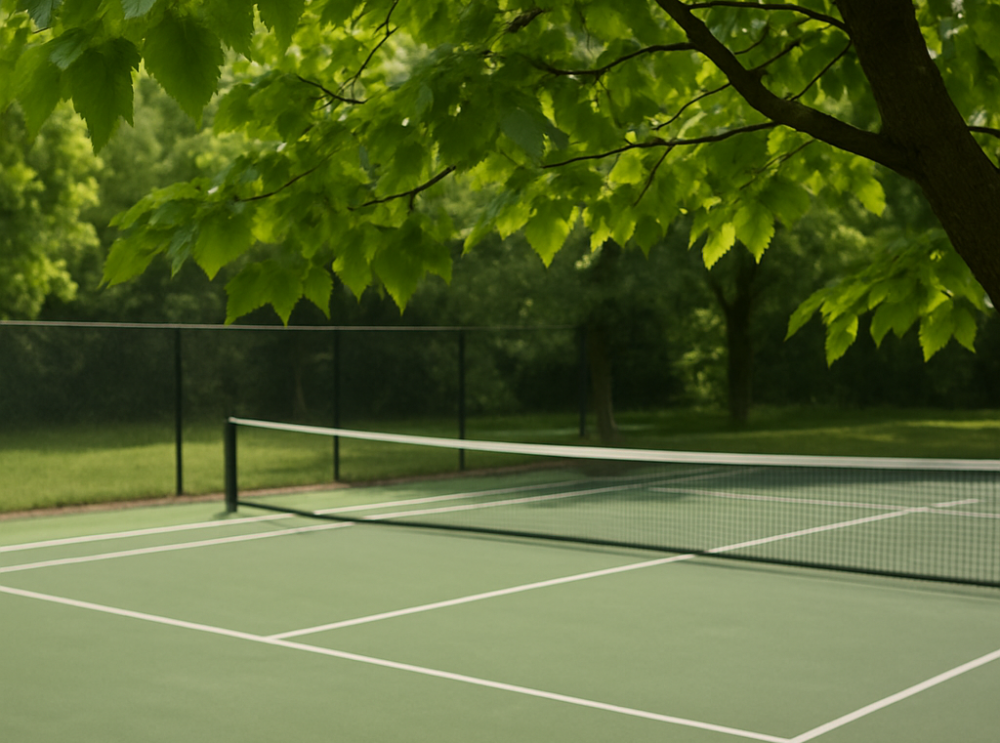
Keep the tennis court clear of overhanging trees. Water dripping from the branches of overhanging trees may cause slippery or discoloured patches on the surface of the tennis court, they also encourage the growth of algae or moss and may even erode the surface.
The secretions of aphids coat the tennis court surface with a sticky, blackish substance, this substance may damage the line paint on the court. These plants also attract birds, whose droppings cause damage to painted asphalt surfaces during the summer months.
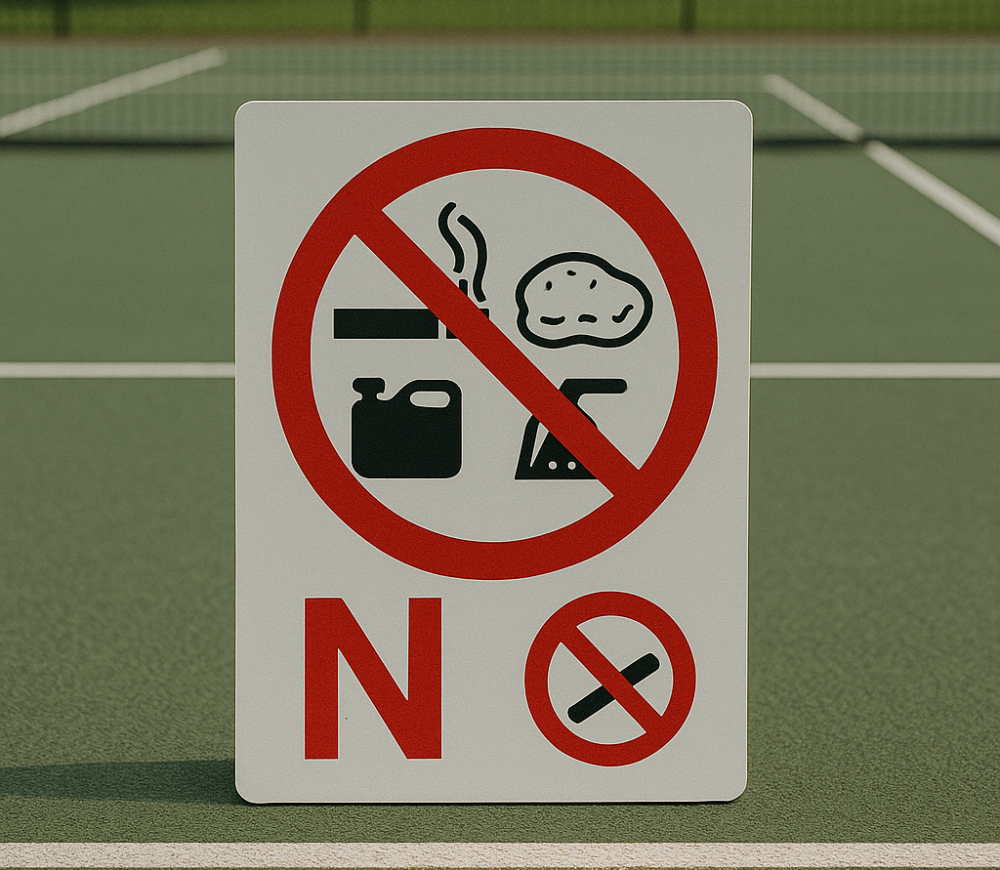
5. Contamination
Keeping your tennis court free from contaminants is essential to preserve its surface and extend its lifespan.
It is crucial that you eliminate any contamination from settling on the surface of the tennis court, this includes cigarette butts, chewing gum, petrol and oils. We advise that you keep a sign prohibiting these items from the tennis court to prolong the life of the court’s surface.
Please note that salt and de-icing agents should not be used to clear courts of ice as they can cause serious damage to the paint coatings.






